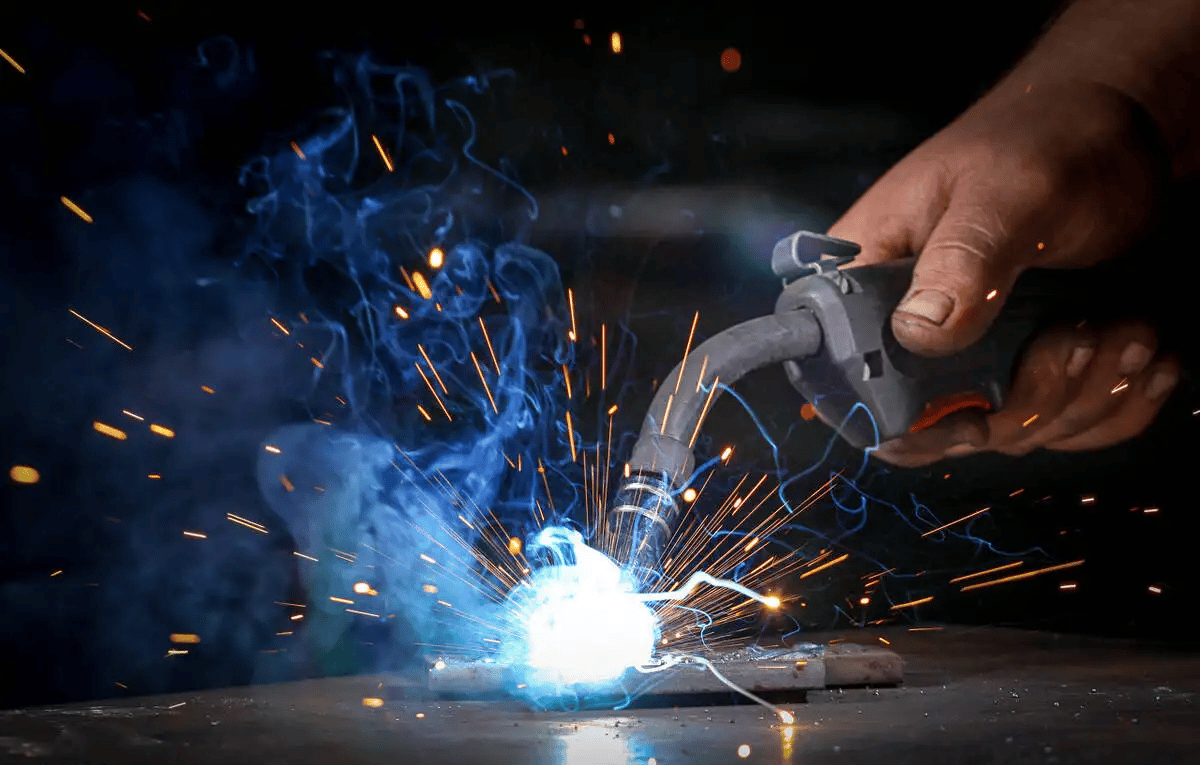Ingenious Techniques to Fillet Weld Examination and Screening: Enhancing Weld Top Quality and Conformity Specifications
In the world of welding, the high quality and integrity of fillet welds play an essential function in guaranteeing the architectural strength and reliability of numerous industrial parts. With the continuous drive for improved effectiveness and compliance with rigorous requirements, the expedition of ingenious approaches to fillet weld examination and testing has actually ended up being essential.
Advanced Non-Destructive Screening Methods
Making use of cutting edge modern technologies, advanced non-destructive screening techniques play a critical role in making certain the stability and top quality of fillet welds. These methods, such as phased variety ultrasonic testing (PAUT) and magnetic bit testing (MPT), offer detailed understandings right into the weld's interior framework without causing any kind of damage to the product. PAUT, as an example, uses numerous ultrasonic elements to check the weld from numerous angles, offering a thorough visualization of potential issues like lack of combination or fractures.
In A Similar Way, MPT is efficient in identifying surface-breaking defects by applying a magnetic area and iron particles to the weld area. This method is especially beneficial for recognizing interruptions that might endanger the weld's toughness. By using these innovative non-destructive screening strategies, weld inspectors can properly analyze the high quality of fillet welds, ensuring conformity with market requirements and regulations. The capacity to find defects early on not just enhances weld high quality however likewise prevents expensive rework or failures in structural honesty, underscoring the importance of these innovative testing techniques in welding assessments.
Robotics and Automation in Examination
The combination of robotics and automation has changed the assessment process for fillet welds, boosting efficiency and precision in high quality assessment. Robotics use accurate control and repeatability in evaluating welds, making sure trustworthy and consistent outcomes. Automated systems can be programmed to comply with specific assessment paths, making sure comprehensive insurance coverage of welds and decreasing the threat of human error.
Robotic examination systems geared up with innovative sensors can discover and gauge weld features with high accuracy, providing comprehensive information for analysis. These systems can determine issues such as cracks, lack of combination, and porosity, making it possible for prompt restorative activities to be taken. Additionally, robotics and automation permit real-time information collection and evaluation, providing instant comments to drivers and facilitating quick decision-making procedures.
In addition, using robotics and automation in fillet weld evaluation enhances total performance by reducing evaluation times and boosting examination throughput. By streamlining the evaluation process, producers can make sure weld top quality and conformity criteria are satisfied efficiently, inevitably resulting in cost savings and boosted item top quality.
Utilizing Artificial Knowledge for Evaluation
Fabricated knowledge plays a critical role in enhancing the efficiency and precision of analysis in fillet weld examination processes. By utilizing the power of AI, assessors can enhance the evaluation of weld top quality and conformity criteria, causing more trusted and precise results. AI formulas can swiftly refine large amounts of information from weld examinations, spotting issues or disparities that may be testing to understand the naked eye. This advanced innovation allows real-time tracking of weld top quality, permitting prompt corrective activities to be taken if any issues are identified.
In addition, AI systems can gain from previous inspection data, continuously improving their capability to determine possible defects and variances in fillet welds. This flexible learning capability improves the total quality assurance process, reducing the likelihood of human mistake and guaranteeing that welds meet the called for requirements. By integrating man-made knowledge right into fillet weld evaluation, sectors can attain greater levels of effectiveness, uniformity, and compliance in their examination practices.
Portable Tools for On-Site Assessment
 Enhancing field inspection efficiency, the fostering of mobile tools changes on-site evaluation processes for fillet welds. These devices supply versatility and benefit, permitting inspectors to conduct extensive assessments in numerous areas, consisting of tough or remote settings. Mobile devices such as ultrasonic screening tools, magnetic fragment examination tools, and electronic radiography systems supply real-time information and high-resolution imaging abilities, allowing fast decision-making and immediate responses on weld high quality.
Enhancing field inspection efficiency, the fostering of mobile tools changes on-site evaluation processes for fillet welds. These devices supply versatility and benefit, permitting inspectors to conduct extensive assessments in numerous areas, consisting of tough or remote settings. Mobile devices such as ultrasonic screening tools, magnetic fragment examination tools, and electronic radiography systems supply real-time information and high-resolution imaging abilities, allowing fast decision-making and immediate responses on weld high quality.One considerable benefit of portable devices is their ability to simplify inspection treatments, minimizing downtime and improving general productivity. Inspectors can conveniently move these devices to different job sites, removing the requirement for delivering heavy machinery or parts to off-site centers. Additionally, the portability of these devices promotes cost-effectiveness by decreasing transportation expenses and accelerating evaluation timelines.
Moreover, the usage of portable tools for on-site evaluation promotes positive quality assurance measures, as assessors can promptly determine site link and resolve any kind of potential welding issues or disparities. By incorporating these innovative innovations into on-site evaluation techniques, welding specialists can ensure conformity with industry standards and enhance weld high quality, inevitably bring about boosted structural stability and safety in numerous welding applications.
Combination of Information Management Solution
Having actually optimized on-site assessment processes through the use of mobile tools, the following stage involves the seamless combination of information management systems to even more boost efficiency and data analysis capacities in fillet weld inspection and testing. Welding Inspection Racine. By integrating information monitoring systems right into the inspection process, organizations can enhance information collection, storage space, and evaluation. This integration enables for real-time surveillance of weld top quality, immediate identification of problems, and timely decision-making to remedy any kind of concerns that might arise during the evaluation process
Data administration systems play a crucial role in centralizing evaluation data, helping with simple gain access to for licensed workers, and guaranteeing data integrity and safety and security. With the integration of these systems, inspectors can generate comprehensive reports, track historic information for pattern analysis, and improve overall process performance. The assimilation of information management systems enables smooth interaction between different stakeholders entailed in the evaluation process, cultivating partnership and enhancing total high quality control measures. Inevitably, the combination of information administration systems serves to boost the requirements of fillet weld inspection and screening, making sure compliance with sector policies and boosting weld high quality.
Final Thought
To conclude, innovative techniques to fillet weld examination and testing have actually significantly improved weld high quality and conformity standards. Advanced non-destructive testing techniques, robotics, automation, fabricated intelligence, portable tools, and click site information monitoring systems have actually revolutionized the method weld assessments are conducted. By using these innovations, industries can guarantee that welds satisfy the needed top quality criteria and regulations, ultimately improving general effectiveness and security in welding procedures.

By employing these advanced non-destructive testing techniques, weld inspectors can accurately evaluate the quality of fillet welds, guaranteeing compliance with industry standards and regulations. Mobile look at here now devices such as ultrasonic screening tools, magnetic bit assessment devices, and digital radiography systems offer real-time data and high-resolution imaging capabilities, enabling fast decision-making and prompt comments on weld high quality.
Having optimized on-site inspection procedures with the usage of portable tools, the following stage includes the seamless combination of data management systems to better boost effectiveness and information analysis capabilities in fillet weld evaluation and testing (Welding Inspection Racine). Ultimately, the assimilation of data monitoring systems offers to raise the requirements of fillet weld evaluation and testing, ensuring conformity with sector guidelines and improving weld high quality
 In verdict, cutting-edge strategies to fillet weld inspection and testing have considerably improved weld top quality and conformity criteria.
In verdict, cutting-edge strategies to fillet weld inspection and testing have considerably improved weld top quality and conformity criteria.